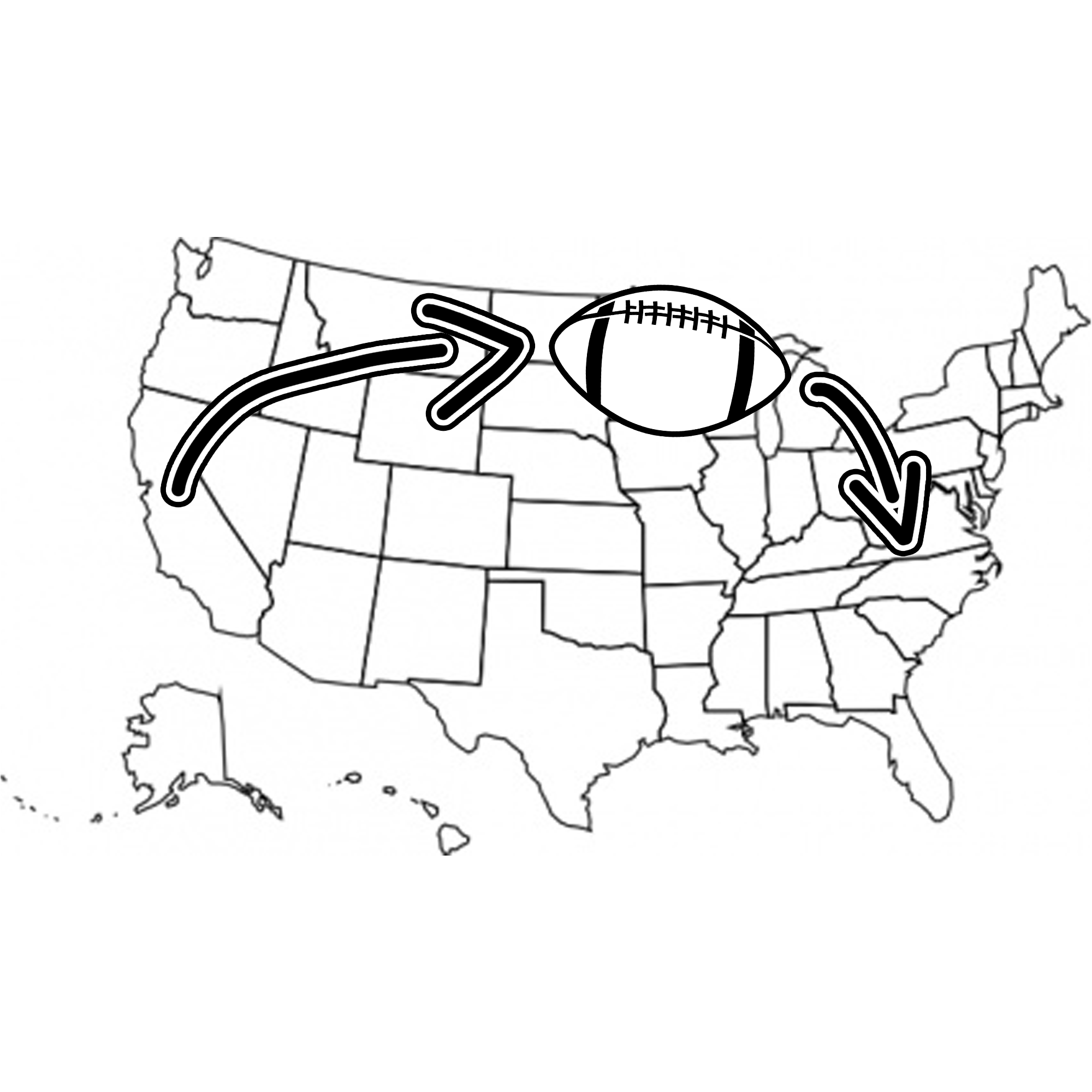College Sports Confernece Realignment Causing Major Issues for Athletes Outside of Football
By Aspen McAdoo
Conferences in college sports date back all the way to 1896 when the first one was created. College sports are entering a whole different time with the new conference realignments. Conferences were originally created to keep teams from traveling thousands of miles to play games and play teams relatively close to them. College realignment started when the University of Texas and University of Oklahoma announced they were going to be joining the Southeastern Conference (SEC) in 2021. Ever since, almost every single conference has seen movement between schools. The Pacific 12 (PAC 12) currently has 12 members but by the end of this year there will only be two members. At the end of the day, all of these changes are a result of one thing: money.
When people think of the conference changes, they may only think about football and while that may be the sport that brings in the most money, these changes affect every single sport within that university. Football in college is mostly played on Saturday, which means it doesn’t really have an effect on students’ education, which occurs mostly Monday through Friday. According to fox4kc.com, the University of Missouri head football coach, Eli Drinkwitz said, “I don’t worry at all about the game, the game is going to be strong, football’s going to be fine, we’ll all figure it out, but did we consider the people we are entrusted with? Did we consider the student-athlete?” Many other sports are played throughout the weekdays and having to travel 800 miles to play a game and then come back the next day and take an exam isn’t ideal for student-athletes. Also, Drinkwitz said, “They travel commercial, they get done playing at four, they got to go to the airport, they come back, it’s three or four in the morning, they got to go to class. I mean, did we ask any of them?” There are many people who agree and express their frustration alongside Drinkwitz.
Athletes that play multiple games a week are the ones that people should be worried about, but since football is the top money producer the other sports get left without a say. According to NCAA.org, there are 480,000 collegiate student athletes and 70,000 of those play football. In reality, if conference board members actually care about their athletes as much as they say they do, they would be putting non-football athletes first since they are going to be the ones who endure the worst of these changes. Athletes are going to be put through a ridiculous amount of stress and at the end of the day, will lead to major health issues. Many athletes won’t end up making it to the pro level, so their education is crucial but being asked to do hours worth of homework and then perform well on an exam with three hours of sleep isn’t ideal.
Some sports don’t get funded as much, so long travels will deplete some of the money source leaving less money for other athletic needs. According to buissnessinsider.com, NCAA division one football makes about $31.90 million per year, while the next closest is men’s basketball at $8.20 million. The next 35 sports combined behind college football only make $31.70 million. If programs don’t get certain funds it could cause issues for their team down the road. Abby Wooten, a junior at Ponte Vedra High School, is committed to play women’s soccer at Samford University, who is in the Southern conference and have not made plans to switch conferences, said, “The realignment didn’t affect my decision that much since Samford didn’t participate in it but some of the schools that reached out to me were affected by it. Some other recruits are so caught up in playing in a major conference that these changes certainly could affect many other athletes.”
“Some other recruits are so caught up in playing in a major conference that these changes certainly could affect many other athletes.”
-Abby Wooten (11)
Although there are many negatives, there are some positives to the big changes. For the west coast schools, they don’t play until late at night, but if they join an eastern coast conference they will be playing in Eastern Standard Time (EST), allowing more viewers to watch games. Ashley Albert, a junior at PVHS who plays lacrosse said, “While there are tons of negatives there are some positives that can come out of this. There will be more viewers watching teams from the west coast when they play on the east coast, and this gives smaller name schools to get put into larger name conferences.”
Teams joining new conferences are creating “super conferences” causing all the best competition to be in a select few conferences. The playoffs will likely become harder to get into because only a few schools from each conference can make it, causing there to be major competition. These changes affect athletes outside of football and arguably leave more of an effect on athletes as well. While there are many negatives to conference realignment there can also be some positives. Many people don’t realize what effect this has on athletes outside of football but that makes because football brings in the most attention.
Power Five Conferences Before Realignment:
Atlantic Coastal Conference (ACC): Boston College, Clemson, Duke, Florida State, Georgia Tech, Louisville, Miami (FL), North Carolina, North Carolina State, Pittsburgh, Syracuse, Virginia, Virginia Tech, Wake Forest
Big Ten Conference (B1G): Illinois, Indiana, Iowa, Maryland, Michigan, Michigan State, Minnesota, Nebraska, Northwestern, Ohio State, Penn State, Purdue, Rutgers, Wisconsin
Big Twelve Conference (BIG 12): Baylor, Iowa State, Kansas, Kansas State, Oklahoma State, Texas Christian (TCU), Texas Tech, West Virginia, Texas, Oklahoma
Pacific 12 Conference (Pac 12): Arizona, Arizona State, California, UCLA, Colorado, Oregon, Oregon State, Southern California (USC), Stanford, Utah, Washington, Washington State
Southeastern Conference (SEC): Alabama, Arkansas, Auburn, Florida, Georgia, Kentucky, Louisianan State (LSU), Ole Miss, Mississippi State, Missouri, South Carolina, Tennessee, Texas A&M, Vanderbilt
Power Five Conferences After Realignment:
ACC: Boston College, California, Clemson, Duke, Florida State, Georgia Tech, Louisville, Miami, North Carolina, North Carolina State, Pittsburgh, Southern Methodist (SMU), Stanford, Syracuse, Virginia, Virginia Tech, Wake Forest
B1G: Indiana, Illinois, Iowa, Maryland. Michigan, Michigan State, Minnesota, Nebraska, Northwestern, Ohio State, Oregon, Penn State, Purdue Rutgers UCLA, USC, Wisconsin, Washington
BIG 12: Arizona, Arizona State, Baylor, Brigham Young (BYU), Colorado, Cincinnati, Houston, Iowa State, Kansas, Kansas State, Oklahoma State, TCU, Texas Tech, Central Florida (UCF), Utah, West Virginia
Pac 12: Oregon State, Washington State
SEC: Alabama, Arkansas, Auburn, Florida, Georgia, Kentucky, LSU, Mississippi State, Missouri, Oklahoma, Ole Miss, South Carolina, Tennessee, Texas, Texas A&M, Vanderbilt





